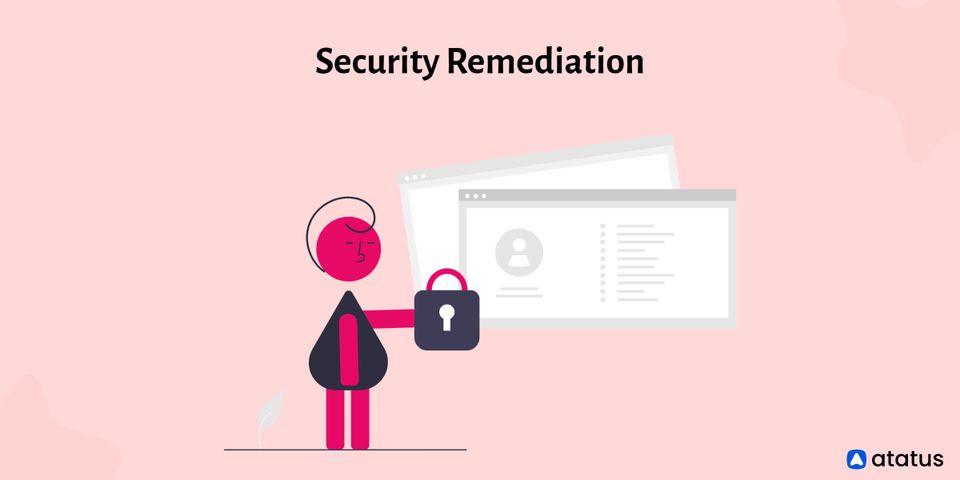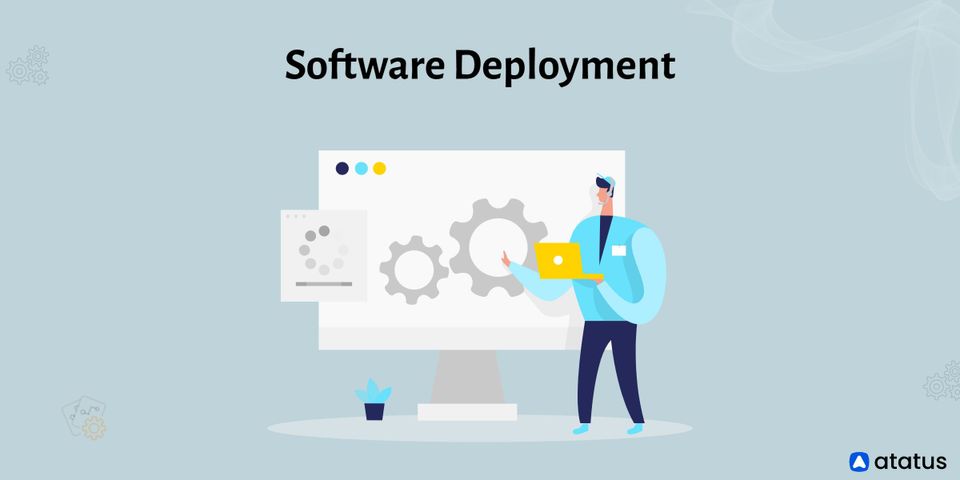Your organization's data assets must be secured from security risks, regardless of the size of your business operations. When a risk enters your organization's security architecture, it can be eliminated from the source or contained to reduce losses. Remediation refers to the steps performed to eliminate it after a threat to your organization's data is identified or goes live.
We will cover the following:
- What is Security Remediation?
- Types of Security Remediation
- How to Implement Threat Remediation?
- What are the Steps in the Remediation Process?
- Benefits of Security Remediation
- Why is Threat Remediation Important?
What is Security Remediation?
The process of recognizing threats and taking the necessary procedures to resolve them is known as security remediation. Anything that has the potential to hurt, penetrate, steal, or damage your operations, software, hardware, or information is considered a threat. Cloud jailbreaking, machine-to-machine attacks, malware, and headless worms are some of the most common security threats.

Organizations that do not take these risks seriously and implement a comprehensive security repair strategy, such as installing virus prevention software, are vulnerable to future attacks. As a result, remediation of IT security is critical for any organization that operates in any form online, which is practically every business in the twenty-first century.
As the phrase implies, the remediation procedure entails the treatment of a security breach. Your cyber security team can use remediation procedures to get rid of suspicious behaviors and malicious attacks like malware, ransomware, and phishing.
In cyber security, remediation refers to dealing with a breach and limiting the amount of damage that breach could do to your company. If you don't discover and address a breach promptly, it might escalate to the point where it's nearly hard to contain.
As a result, critical information from your company may be exposed. Furthermore, some security breaches can leave your systems useless, resulting in a loss of revenue.
Types of Security Remediation
You have a variety of IT security remediation tools at your disposal. The best method to ensure you have a robust, competent, and fast security remediation strategy is to use these solutions in concert with one another.
Some of the most prevalent types of security remediation are listed below.
- Antivirus Software
The days when having antivirus software meant your computer was immune from dangers are long gone. Antivirus is still an important aspect of your security approach in today's complicated cybersecurity ecosystem, but it is far from a panacea. Today's modern antivirus software can either start remediation procedures automatically or inform the endpoint user whether they want to initiate cleanup. - Manual vs Automated Remediation Solutions
Automated remediation tools are becoming more common since scaling and customization has become a fundamental element of complicated networks. Unlike manual remediation processes, which require people to initiate the process manually, automated tools are event-triggered, allowing any deviations from standard operating procedures to initiate the remediation process. - Training
Security remediation should be considered as a proactive strategy that employs a variety of tools and methods to mitigate susceptibility and infection. One of these methods is to teach your workers and IT members across all departments regularly. Developing a company culture in which employees feel empowered in the face of dangers is an important element that should be included in the overall plan.
How to Implement Threat Remediation?
The best method to adopt repair IT security practices is to take proactive actions, and having a proper security remediation roadmap will ensure you're always prepared for whatever threats may arise. A risk assessment remediation strategy is the best way to do this.
IT teams use risk assessment to obtain information and insight about vulnerabilities in their systems that make them vulnerable to cyberattacks. These are the steps in the risk assessment process.
- Gather information on the system, the business, and the environment.
- Monitor systems and execute an infrastructure scan of all devices connected to your network to identify the risks that are affecting your business.
- Determine how to allocate resources and time to risk the threat's mitigation once security threats have been recognized.
- Determine the threat's severity and mitigation strategy so you can begin implementing security measures for each risk.
- To prevent future threats from entering your network, integrate solutions and security tools.
What are the Steps in the Remediation Process?
Many current remediation techniques are merely band-aid solutions to massive security vulnerabilities. Several remediation techniques, for example, initiate an automated kill process. To the uneducated eye, killing the problematic process may appear to be the best answer.
However, it is necessary to analyze what type of threat and/or breach resulted in the problematic procedure. The attackers can remain in your systems even if you 'kill' the suspicious activity.
Your remediation operations must include the detection of the cause if you want to decontaminate and permanently solve the problem. Furthermore, many remediation techniques fail to ensure that the threat has been completely removed.
As a result, your security team's remediation procedures must include acquiring accurate and sufficient information about the incident.
Benefits of Security Remediation
After a threat to your organization's data is identified or goes live, remediation refers to the steps performed to eliminate it. It is a collection of several crucial and frequently interdependent steps that benefit your company in a variety of ways.
Here are five advantages of information security and compliance remediation efforts:
- Address Cybersecurity Risks in Real-time
When remediation efforts are carried out in real-time, they are the most effective. Especially in light of the rapid evolution of cyber-threats. Fortunately, in every organization, remediation operations can be successfully linked with information security and compliance issues. Your remediation activities will be more efficient and effective as a result of this integration. Such comprehensive remediation activities help you in fending off cyber hazards as they emerge in real-time for your organization. - Gain Customer Trust
Risks linked to information security and compliance can be mitigated to help you acquire your consumers' confidence and trust. It shows customers that you are committed to providing them with a secure service that protects their personal information. It shows your customers that you have a comprehensive security plan in place that allows you to control or eliminate threats even if they get past your defenses. - Prepare for Future Risks
In the long run, the outcomes of your repair efforts, whether favorable or negative, are also useful to you. You can determine which remediation tactics succeeded and which did not for your company. They tell you what you need to work on in your future risk assessments and remediation methods for security and compliance. As a result, you will be able to create better information and compliance security rules in the future. - Prevent Financial Losses
In the corporate world, the proverb "time is money" is widely used. One of the most significant benefits of integrating security and compliance risks with remediation is that it saves time, money, and other resources for enterprises. A cybersecurity risk, if not properly addressed, can cost you a lot of money in terms of lost revenue and customer trust, as well as legal consequences. - Reduce Security Risks
Remediation is the process of preventing your organization's information security and compliance risks from growing larger and more destructive. Your clients' private and sensitive data may be compromised if your company is unable to detect, remediate, or minimize a data breach. Remediation allows you to lessen the impact of risk and, eventually, eliminate it.
Why is Threat Remediation Important?
According to one report, 99 percent of successful cyberattacks are carried out using vulnerabilities that have been known for at least a year and that the organization has been aware of. As a result, you must ensure that you are taking actions to mitigate vulnerability issues before they become a problem. You should try to catch them either before or during their occurrence.
You'll be leaving your front door unlocked if you don't address the threat. You can hope that a thief won't just try to open it, but you can't be sure.

Security systems that are properly installed might work as a deterrent. The more difficult it is for a thief to break into your system, the less likely they are to try a breach.
Threat remediation is gaining traction among business owners and is often seen as the way of the future in cybersecurity. Rather than dealing with the aftermath of an attack, you should concentrate on preventing one. That is precisely what a good threat remediation service will ensure.
Conclusion
The security remediation methods must be regularly kept up to date with the most recent threat reports. Obsolete software poses a similar threat to systems, as they will be unable to secure data. The numerous threat checks and supervision help in the improvement of data security solutions.
To keep oneself safe from the destructive activities of the internet's hazardous elements, every organization should follow up with security remediation measures. The procedure ensures the safety and can protect the company from harm.
Monitor Your Entire Application with Atatus
Atatus is a Full Stack Observability Platform that lets you review problems as if they happened in your application. Instead of guessing why errors happen or asking users for screenshots and log dumps, Atatus lets you replay the session to quickly understand what went wrong.
We offer Application Performance Monitoring, Real User Monitoring, Server Monitoring, Logs Monitoring, Synthetic Monitoring, Uptime Monitoring, and API Analytics. It works perfectly with any application, regardless of framework, and has plugins.

Atatus can be beneficial to your business, which provides a comprehensive view of your application, including how it works, where performance bottlenecks exist, which users are most impacted, and which errors break your code for your frontend, backend, and infrastructure.
If you are not yet an Atatus customer, you can sign up for a 14-day free trial.





